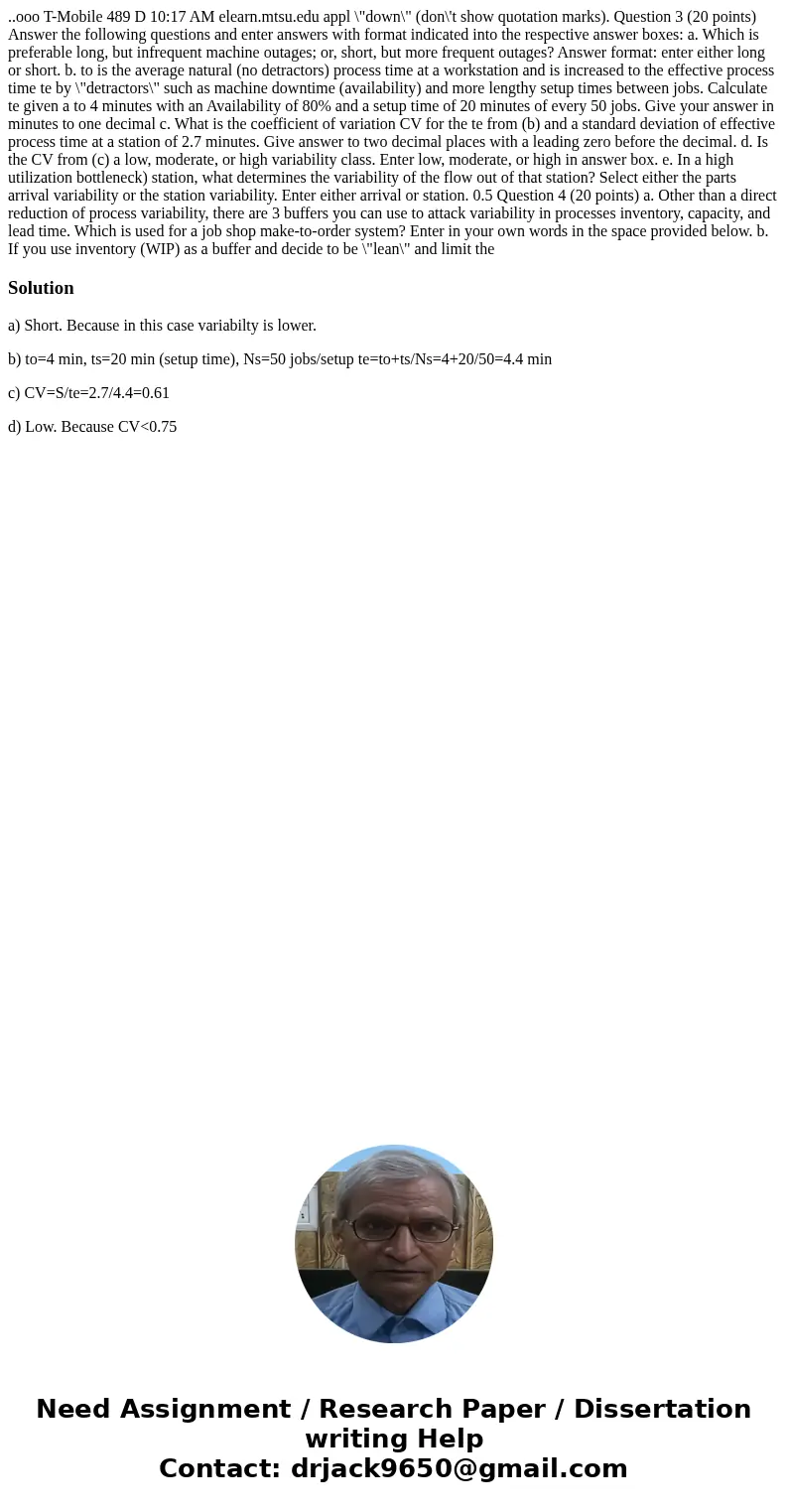ooo TMobile 489 D 1017 AM elearnmtsuedu appl down dont show
..ooo T-Mobile 489 D 10:17 AM elearn.mtsu.edu appl \"down\" (don\'t show quotation marks). Question 3 (20 points) Answer the following questions and enter answers with format indicated into the respective answer boxes: a. Which is preferable long, but infrequent machine outages; or, short, but more frequent outages? Answer format: enter either long or short. b. to is the average natural (no detractors) process time at a workstation and is increased to the effective process time te by \"detractors\" such as machine downtime (availability) and more lengthy setup times between jobs. Calculate te given a to 4 minutes with an Availability of 80% and a setup time of 20 minutes of every 50 jobs. Give your answer in minutes to one decimal c. What is the coefficient of variation CV for the te from (b) and a standard deviation of effective process time at a station of 2.7 minutes. Give answer to two decimal places with a leading zero before the decimal. d. Is the CV from (c) a low, moderate, or high variability class. Enter low, moderate, or high in answer box. e. In a high utilization bottleneck) station, what determines the variability of the flow out of that station? Select either the parts arrival variability or the station variability. Enter either arrival or station. 0.5 Question 4 (20 points) a. Other than a direct reduction of process variability, there are 3 buffers you can use to attack variability in processes inventory, capacity, and lead time. Which is used for a job shop make-to-order system? Enter in your own words in the space provided below. b. If you use inventory (WIP) as a buffer and decide to be \"lean\" and limit the 
Solution
a) Short. Because in this case variabilty is lower.
b) to=4 min, ts=20 min (setup time), Ns=50 jobs/setup te=to+ts/Ns=4+20/50=4.4 min
c) CV=S/te=2.7/4.4=0.61
d) Low. Because CV<0.75

 Homework Sourse
Homework Sourse